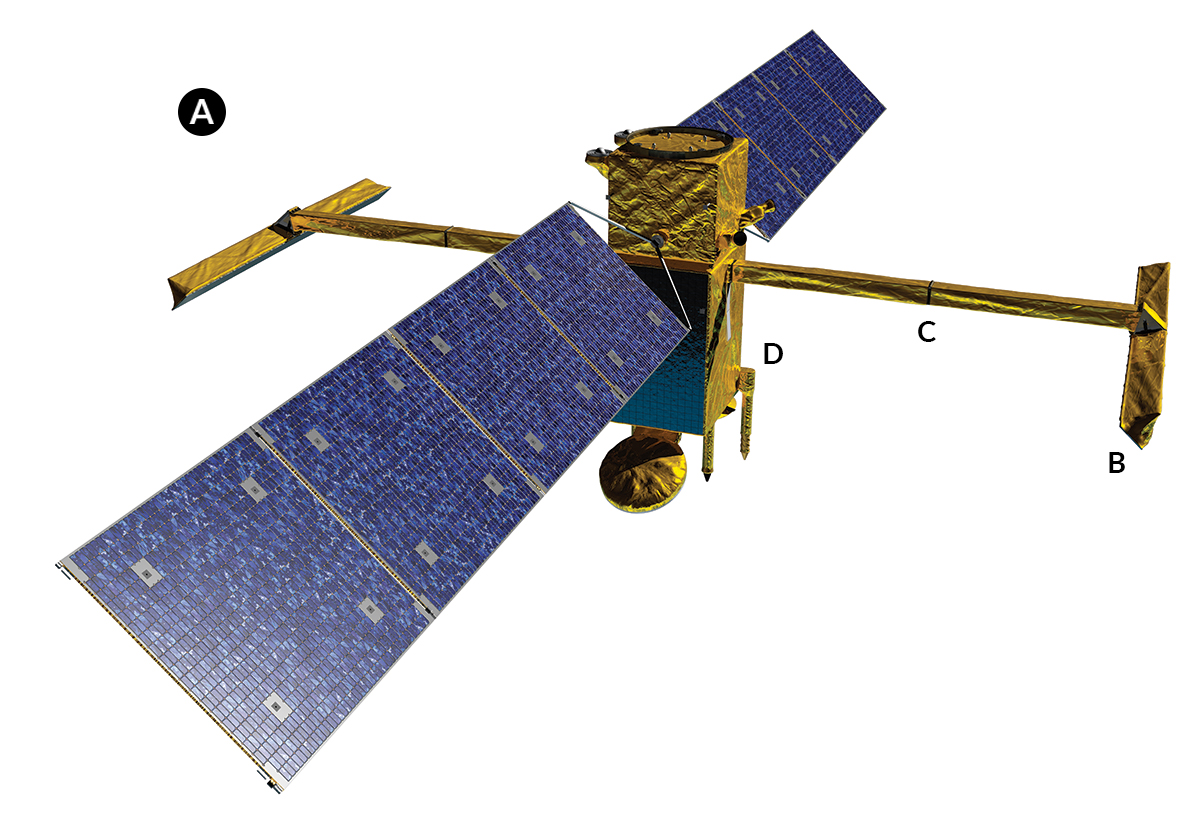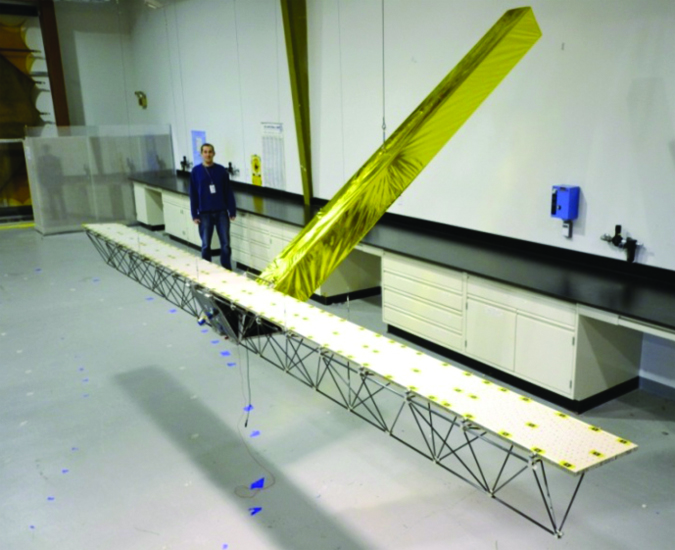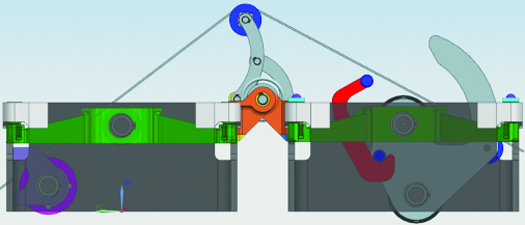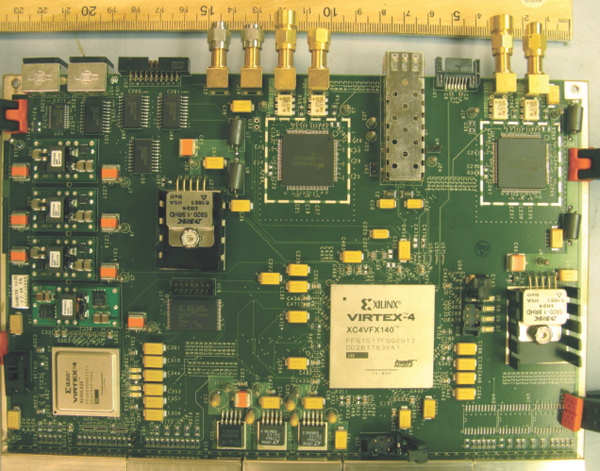Early Technology Developments for the SWOT Mission
Launched in December 2022, the Surface Water Ocean Topography (SWOT) mission is intended to produce a better understanding of the world’s oceans and terrestrial surface waters at a much higher spatial resolution than is currently available. Using wide-swath radar altimetry measurements, SWOT will make the first global survey of Earth’s surface water, observe the fine details of the ocean’s surface topography, and measure how water bodies change over time.
Since 1998, numerous ESTO investments have steadily advanced the technologies needed for such a mission. What follows are a few key projects that enabled SWOT:


A) Two early ESTO projects at the Jet Propulsion Lab (JPL) – “An Advanced Altimeter for Ocean Science” in 1998 and “Ka-band SAR interferometry studies for the SWOT Mission” in 2007 – developed and refined the initial instrument concept that would lead to the designation of SWOT as a mission. These projects also advanced several key technologies, including a multi-frequency antenna, monolithic microwave integrated circuit (MMIC) based instrument electronics, and an FPGA-based on-board interferometric SAR processor to match the radar’s output data rate with the existing downlink capabilities. (Principal Investigator: Lee-Lueng Fu, JPL, IIP-98 and IIP-07)

B) SWOT includes two deployable, 5-meter, Ka-band reflectarray antennas – part of the Ka-band Radar Interferometer (KaRIn) on SWOT – that are separated by 10 meters. These antennas need to be structurally flat and thermally stable to meet demanding pointing and interferometric phase stability requirements. A 2008 project at the Jet Propulsion Lab built and tested a full-scale deployable reflectarray prototype that became baseline design for the KaRIn instrument. (Principal Investigator: Mark Thomson, JPL, ACT-08)
 C) A related project from 2010 designed and prototyped the precision-deployable masts for the KaRIn antennas, including the hinges and latches needed for precise space deployment as well as an accurate pointing adjustment mechanism. Shown here is the mechanical drawing for a 180-degree hinge and latch at the mid-span of the boom. (Principal Investigator: Greg Agnes, JPL, ACT-10)
C) A related project from 2010 designed and prototyped the precision-deployable masts for the KaRIn antennas, including the hinges and latches needed for precise space deployment as well as an accurate pointing adjustment mechanism. Shown here is the mechanical drawing for a 180-degree hinge and latch at the mid-span of the boom. (Principal Investigator: Greg Agnes, JPL, ACT-10)
 D) A key challenge for the SWOT mission was a low-power, high bandwidth Ka-band receiver capable of precision measurements over a wide bandwidth. A 2008 project designed and developed a single-stage Dual Down Converter that met SWOT mission requirements. (Principal Investigator: Paul Siqueira, University of Massachusetts, ACT-08)
D) A key challenge for the SWOT mission was a low-power, high bandwidth Ka-band receiver capable of precision measurements over a wide bandwidth. A 2008 project designed and developed a single-stage Dual Down Converter that met SWOT mission requirements. (Principal Investigator: Paul Siqueira, University of Massachusetts, ACT-08)
 Lastly, with support from the SWOT project and SBIR, a 2010 ESTO project built and tested AirSWOT, the first-ever airborne Ka-band SAR interferometer. First flown in 2013 onboard NASA’s King Air B200, AirSWOT played a key role in refining the design of SWOT. AirSWOT will also be used to calibrate and validate SWOT data and is available for general airborne science campaigns. (Principal Investigator: Ernesto Rodriguez, JPL, IIP-10)
Lastly, with support from the SWOT project and SBIR, a 2010 ESTO project built and tested AirSWOT, the first-ever airborne Ka-band SAR interferometer. First flown in 2013 onboard NASA’s King Air B200, AirSWOT played a key role in refining the design of SWOT. AirSWOT will also be used to calibrate and validate SWOT data and is available for general airborne science campaigns. (Principal Investigator: Ernesto Rodriguez, JPL, IIP-10)